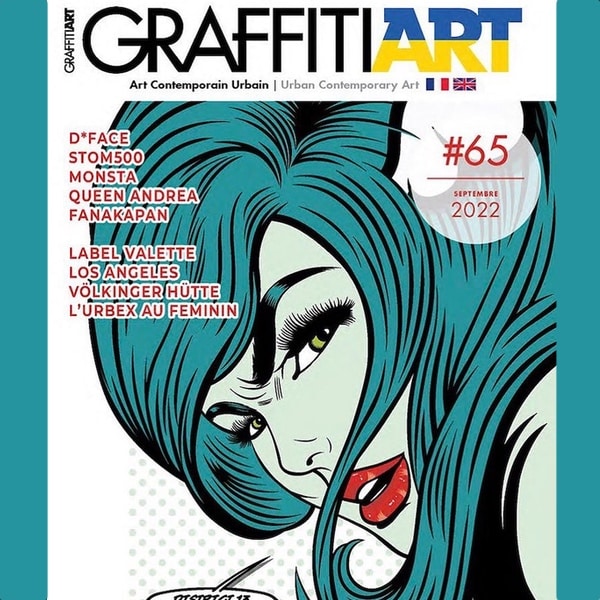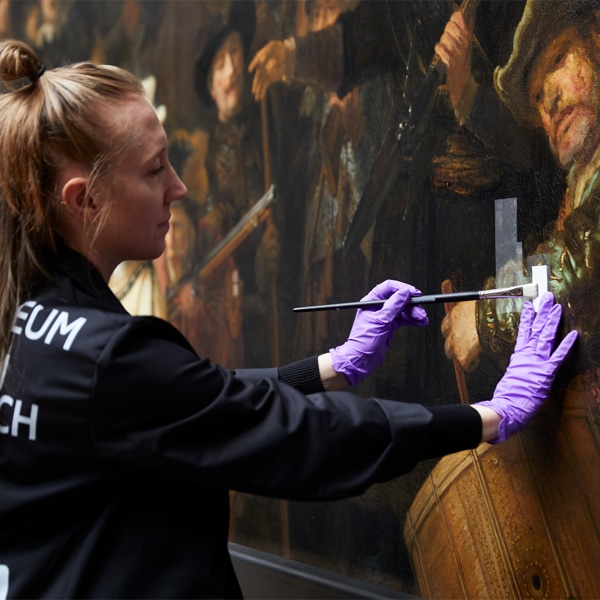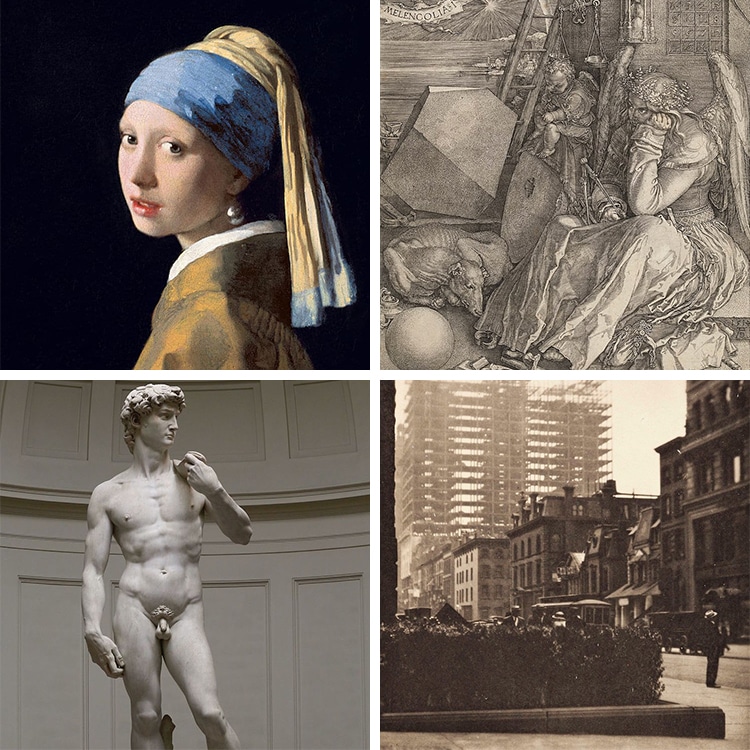
This post may contain affiliate links. If you make a purchase, My Modern Met may earn an affiliate commission. Please read our disclosure for more info.
If you've ever taken an art course or visited a gallery, you've likely come across the term “fine art.” Though it may sound like this describes the quality or value of the art, it actually relates to the purity of the artistic pursuit. Unlike crafts or decorative works, fine art is created solely for aesthetic and intellectual purposes.
When thinking of examples of fine art, famous paintings like the Girl with a Pearl Earring or sculptures like Michelangelo's David usually come to mind. However, this phrase actually encompasses several different disciplines: painting, sculpture, drawing, installation, architecture, and fine art photography. And the list continues to develop.
Here we will learn about the different types of fine art and take a look at some examples.
What is Fine Art?
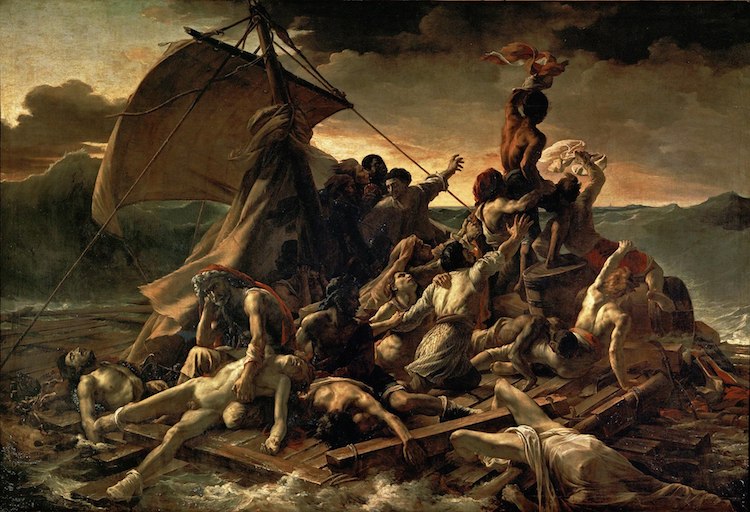
Théodore Géricault, “The Raft of The Medusa,” 1818–9 (Photo: Louvre via Wikimedia Commons, Public domain)
Fine art traditionally refers to types of art that primarily serve an aesthetic or intellectual purpose. This usually applies to visual arts, such as painting and sculpture, but has also been used to describe other creative disciplines including music, architecture, poetry, and performing arts. In this case, the use of the word “fine” refers to the integrity of the artistic pursuit.
The definition of fine art excludes arts that serve functional purposes, most notably crafts and applied arts.
Types of Fine Art
Drawing
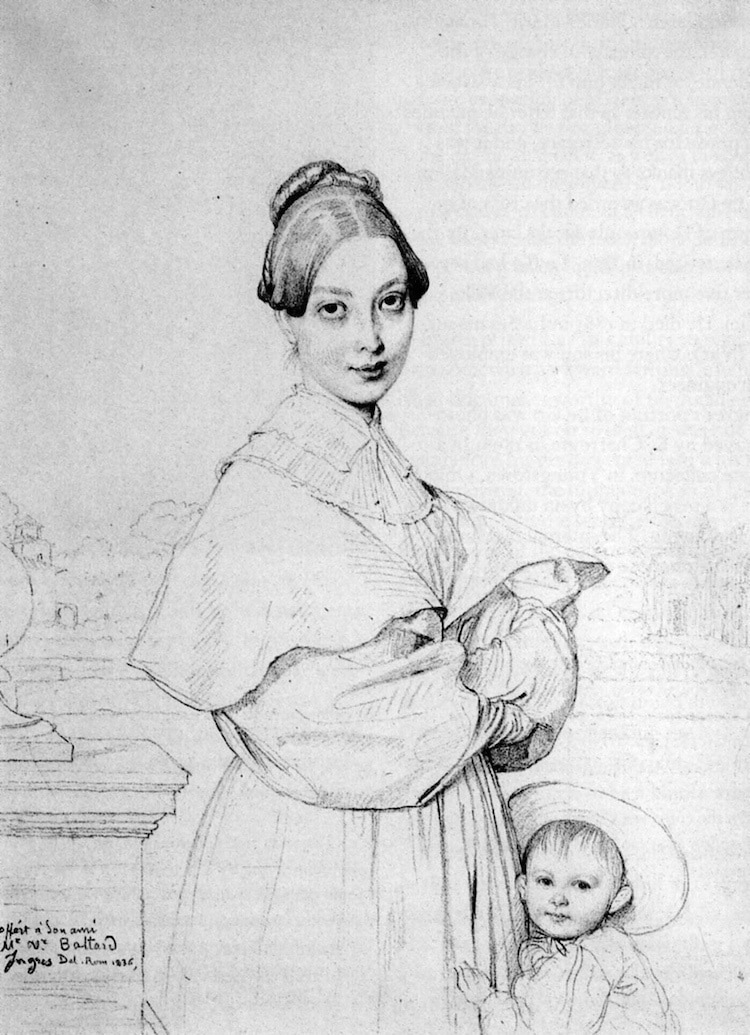
Jean-Auguste-Dominique Ingres, “Portrait of Victor Baltard's Wife (born Adeline Lequeu) and their Daughter Paule,” c. 1800s (Photo: Public Domain via Wikimedia Commons)
With a history tracing back to Paleolithic times, drawing is one of the oldest forms of human communication and creativity. It denotes the practice of making marks on two-dimensional surfaces like paper or board with the aid of a utensil, such as a pencil, pen, charcoal, etc.
Drawing is one of the fundamental elements of art, serving a variety of purposes for creatives. While it can be an art form in itself, it is also used by artists to explore ideas and concepts and to prepare for final artworks in another medium, like painting.
Painting
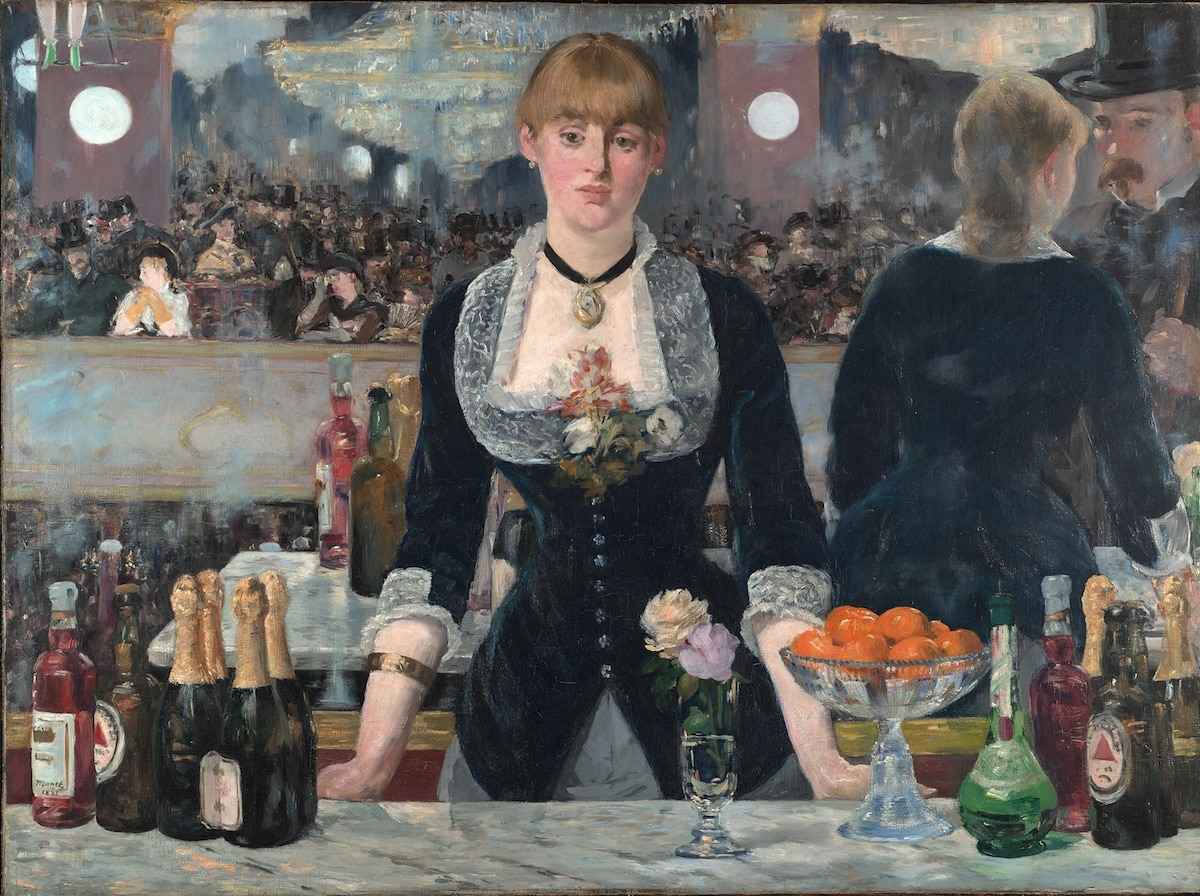
Édouard Manet, “A Bar at the Folies-Bergère,” 1882 (Photo: The Courtauld Institute of Art via Wikimedia Commons, Public domain)
Painting is perhaps the most well-known form of fine art that can be viewed in museums around the world. It describes the act of applying paint or pigment to a hard surface, usually through means of another device, such as a brush or palette knife.
Like drawing, painting has roots dating back thousands of years, making it another age-old form of human expression. Its evolution from cave decorations to depictions on canvas can be credited to developments in painting materials.
In Western art, painting has evolved through numerous art movements—using the medium to explore different aesthetics and ideas triggered by the historical context. Additionally, some of the most famous works of fine art are also paintings, including The Mona Lisa and The Starry Night.
Printmaking
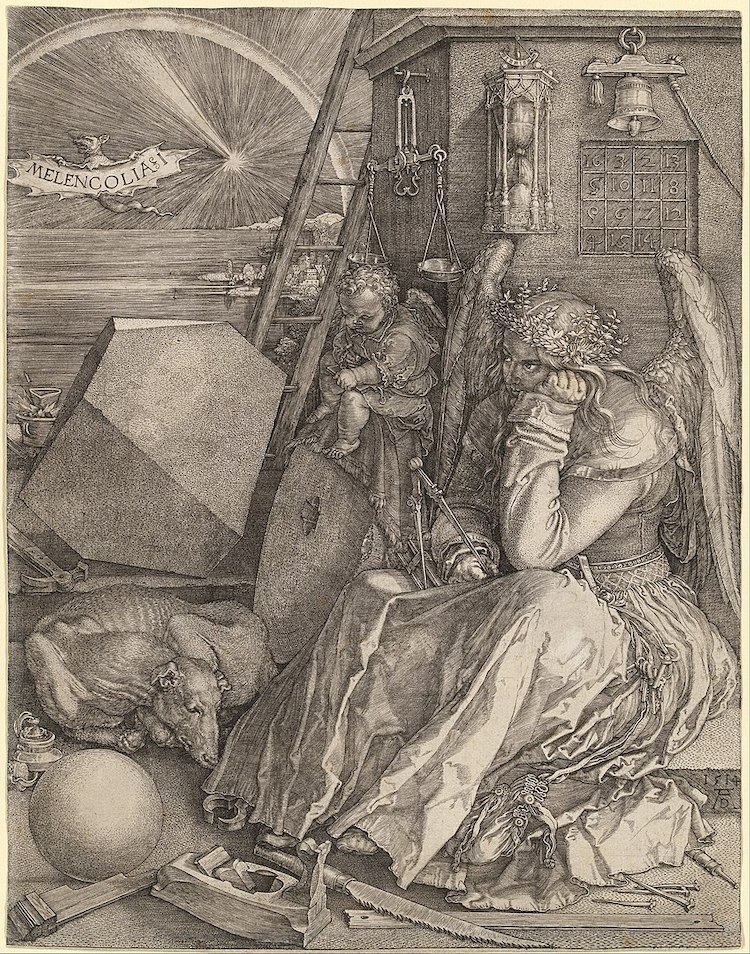
Albrecht Dürer, “Melencolia I,” 1511 (Photo: Wikimedia Commons, Public domain)
Printmaking is a practice that transfers ink from a matrix onto material—typically paper—making multiple impressions of the same image. Matrixes can be made of different materials, including wood, metal plates, linoleum, aluminum, or fabric. While there are different printmaking techniques (each having its own distinct characteristics), the end result is the ability to make several impressions of a single image.
In modern times, prints are issued in editions. Each edition will have a limited number of impressions, though artists sometimes issue open editions. Once the edition is done being printed, the matrix is destroyed and every single impression is considered an original work of art. Traditionally, once printmaking took off, prints were also often used to illustrate books or were sold in small bound collections.
Sculpture
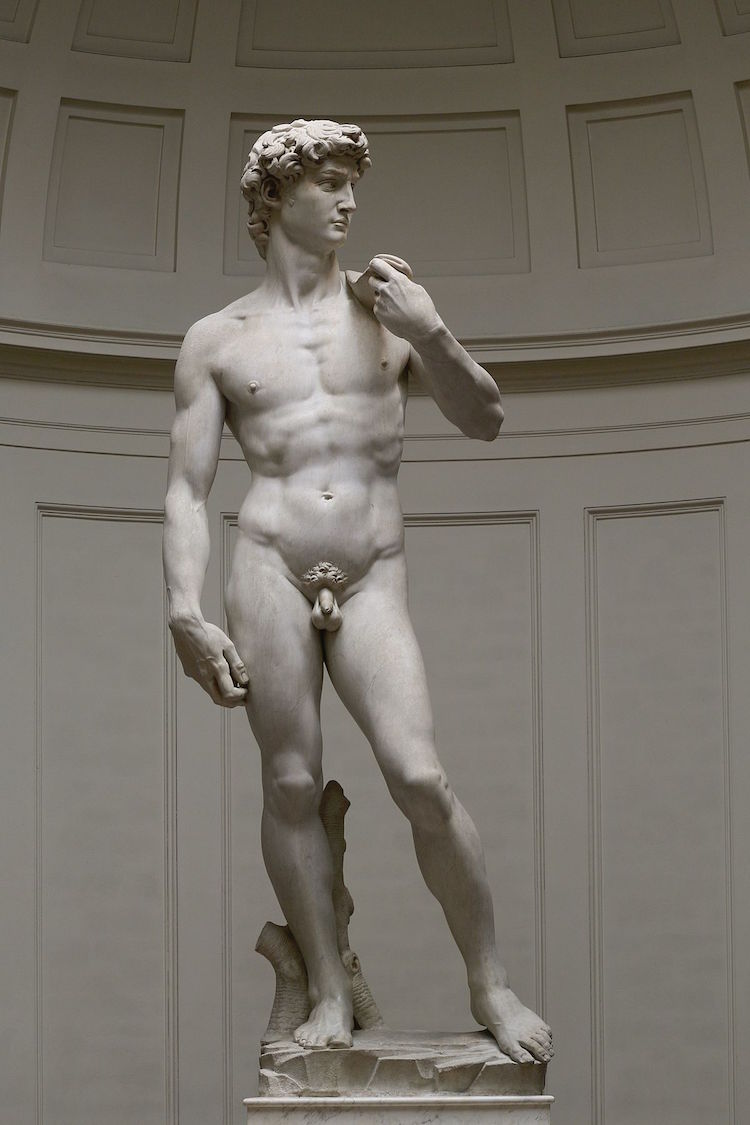
Michelangelo, “David,” 1501–1504 (Photo: Jörg Bittner Unna via Wikimedia Commons, CC BY-SA 3.0)
A sculpture is a three-dimensional work of art created from an additive or subtractive process of the material. In this discipline, artists usually carve or assemble a form from stone, marble, wood, clay, metal, and ceramics, among other materials.
The practice of sculpture has existed for centuries. In fact, one of the oldest known works of art, titled The Venus of Willendorf, is a miniature statuette carved from limestone between 30,000 and 25,000 BCE. Western sculpture as we know it now, however, first blossomed in ancient Greece, when artists captured the human figure with anatomical realism. Since then, it has developed over the course of different art movements, encompassing a range of styles and approaches.
Installation

Robert Smithson, “Spiral Jetty,” 1970 (Photo: Wikimedia Commons, CC BY-SA 2.5)
Installation art is a modern movement characterized by immersive, larger-than-life works of art. Usually, installation artists create these pieces for specific locations, enabling them to expertly transform any space into a customized, interactive environment.
Fine Art Photography
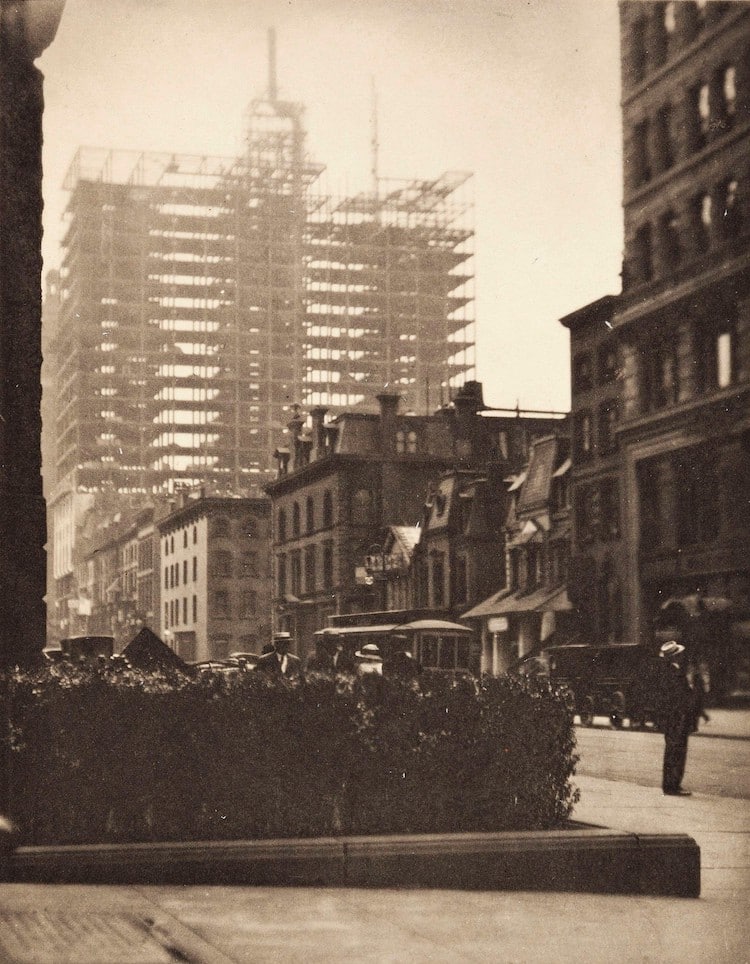
Alfred Stieglitz, “Old and New New York,” 1910 (Photo: Wikimedia Commons, Public domain)
Fine art photography runs contrary to what most of us think about when thinking about how we use a camera. Most amateur photographers use their cameras to document important events and capture memories without artistic motivation. Instead, a distinguishing feature of fine art photography is that recording a subject is not the main purpose. These artists use photography as a means to express their vision and make an artistic statement.
Examples of Famous Fine Art Paintings
Jan Van Eyck, The Arnolfini Portrait, 1434
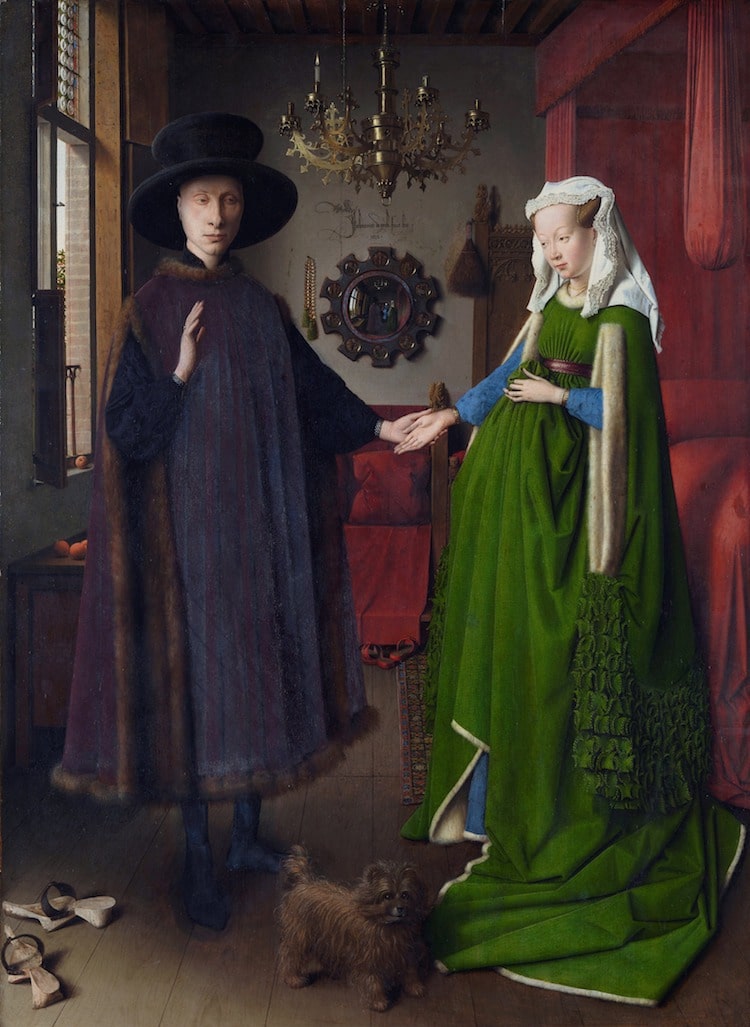
Jan Van Eyck, “The Arnolfini Portrait,” 1434 (Photo: National Gallery via Wikimedia Commons, Public domain)
Title | The Arnolfini Portrait |
Artist | Jan Van Eyck |
Year | 1434 |
Medium | Oil on canvas |
Size | 32.4 in x 23.6 in (82.2 cm x 60 cm); panel 33.3 in x 24.6 in (84.5 cm x 62.5 cm) |
Location | National Gallery (London, England) |
Sandro Botticelli, The Birth of Venus, c. 1484–6
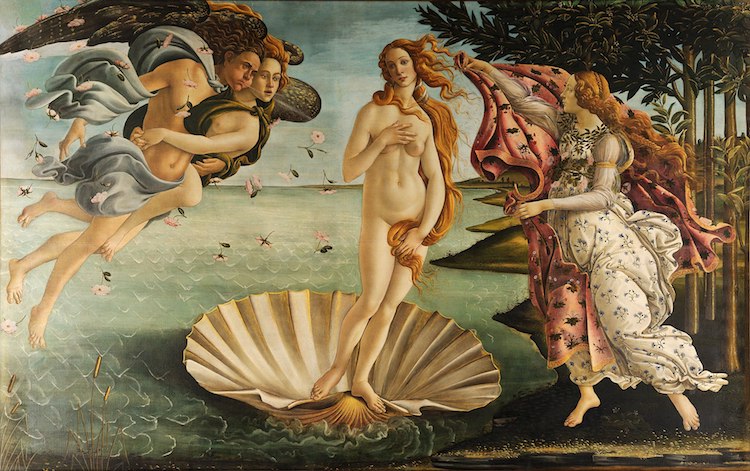
Sandro Botticelli, “The Birth of Venus,” c. 1484–1486 (Photo: Uffizi via Wikimedia Commons, Public domain)
Title | The Birth of Venus |
Artist | Sandro Botticelli |
Year | c. 1484–1486 |
Medium | Tempera on canvas |
Size | 67.9 in × 109.6 in (172.5 cm × 278.9 cm) |
Location | Uffizi Galleries (Florence, Italy) |
Leonardo da Vinci, The Mona Lisa, c. 1503–1506
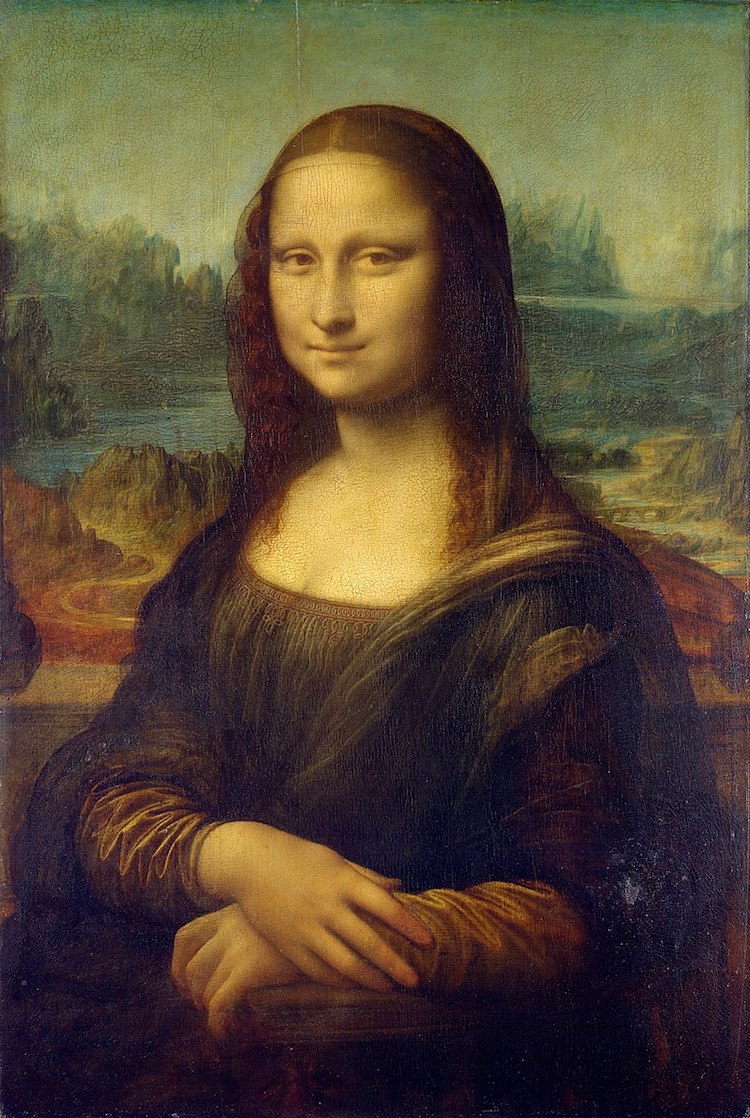
Leonardo da Vinci, “The Mona Lisa,” c. 1503–1506 (Photo: Louvre via Wikimedia Commons, Public Domain)
Title | Mona Lisa |
Artist | Leonardo da Vinci |
Year | 1503-1506 |
Medium | Oil on wood panel |
Size | 30 in × 21 in (77 cm × 53 cm) |
Location | Louvre (Paris, France) |
Raphael, The School of Athens, 1509–1511
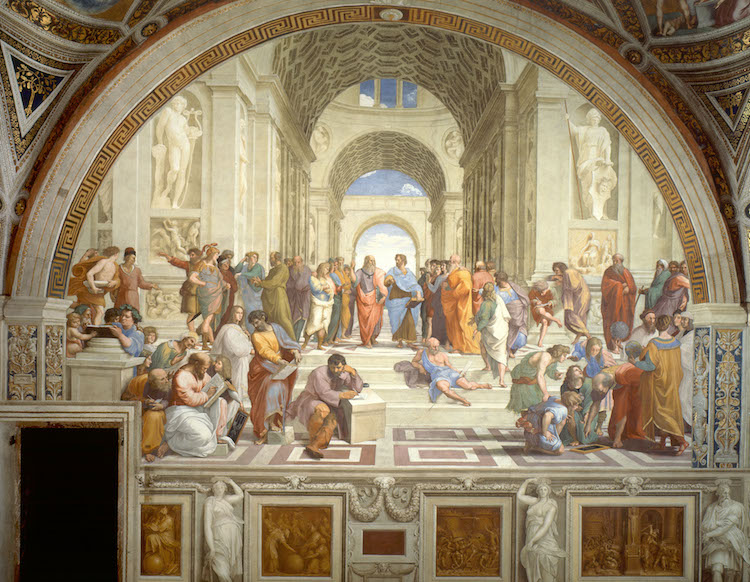
Raphael, “The School of Athens,” 1509–11 (Photo: Wikimedia Commons, Public domain)
Title | The School of Athens |
Artist | Raphael |
Year | 1509–1511 |
Medium | Fresco |
Size | 200 in x 300 in (500 cm x 770 cm) |
Location | Apostolic Palace (Vatican City, Rome, Italy) |
Diego Velázquez, Las Meninas, 1656–7
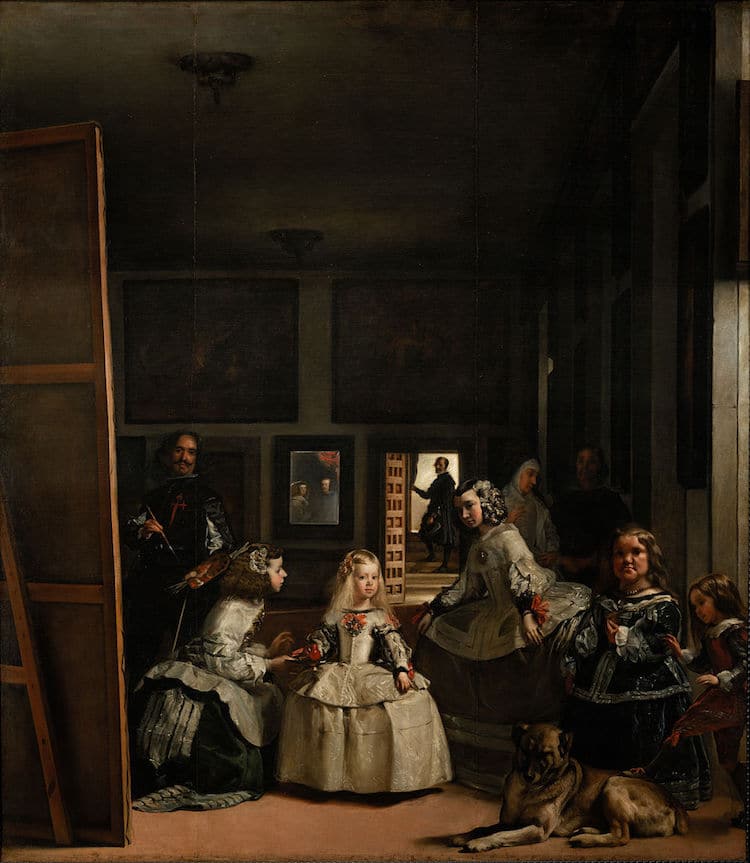
Diego Velázquez, “Las Meninas,” 1656–1657 (Photo: Museo del Prado via Wikimedia Commons, Public domain)
Title | Las Meninas |
Artist | Diego Velázquez |
Year | 1656 |
Medium | Oil on canvas |
Size | 125.2 in x 108.7 in (318 cm x 276 cm) |
Location | Museo del Prado (Madrid, Spain) |
Rembrandt van Rijn, The Night Watch, 1642
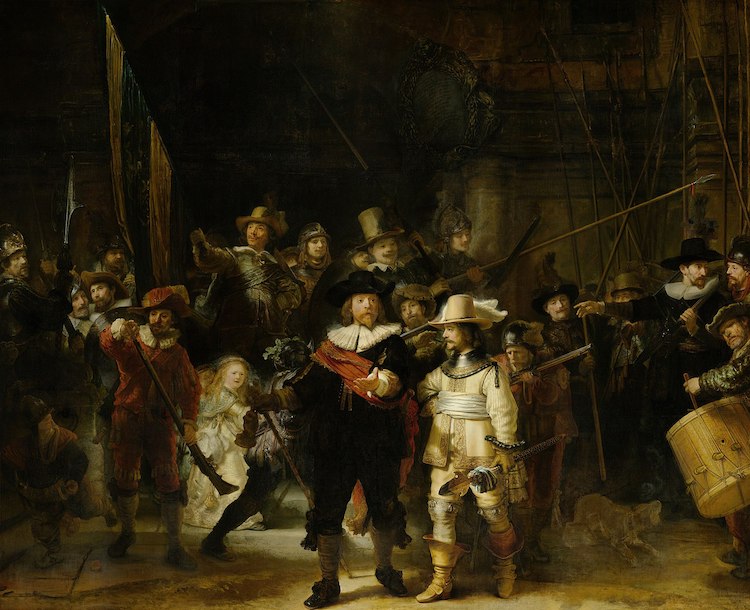
Rembrandt, “The Nightwatch,” 1642 (Photo: Rijksmuseum via Wikimedia Commons, Public domain)
Title | The Night Watch |
Artist | Rembrandt van Rijn |
Year | 1642 |
Medium | Oil on canvas |
Size | 142.9 in x 172 in (363 cm x 437 cm) |
Location | Rijksmuseum (Amsterdam, Netherlands) |
Johannes Vermeer, Girl With a Pearl Earring, c. 1665
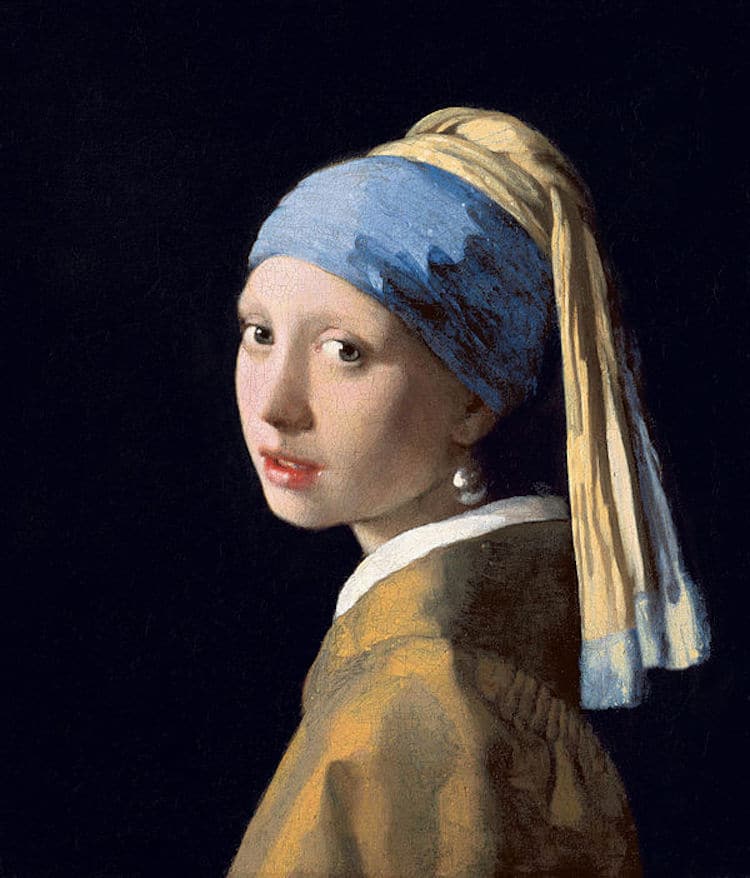
Johannes Vermeer, “Girl with a Pearl Earring,” c. 1665 (Photo: Mauritshuis via Wikimedia Commons, Public domain)
Title | Girl with a Pearl Earring |
Artist | Johannes Vermeer |
Year | c. 1665 |
Medium | Oil on canvas |
Size | 17.5 in x 15 in (44.5 cm x 39 cm) |
Location | Mauritshuis (The Hague, Netherlands) |
Eugène Delacroix, Liberty Leading the People, 1830
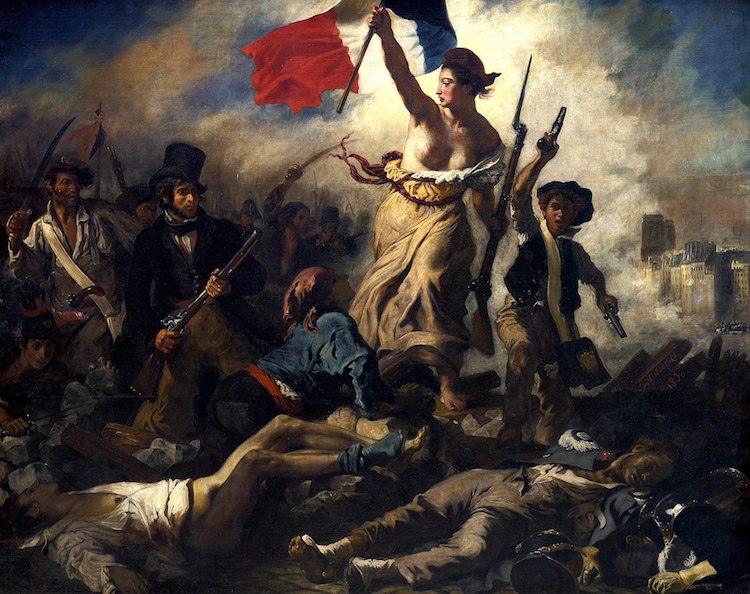
Eugène Delacroix, “Liberty Leading the People,” 1830 (Photo: Louvre via Wikimedia Commons, Public domain)
Title | Liberty Leading the People |
Artist | Eugène Delacroix |
Year | 1830 |
Medium | Oil on canvas |
Size | 102.4 in x 128 in (260 cm x 325 cm) |
Location | Louvre (Paris, France) |
Édouard Manet, Le Déjeuner sur l'Herbe, 1863
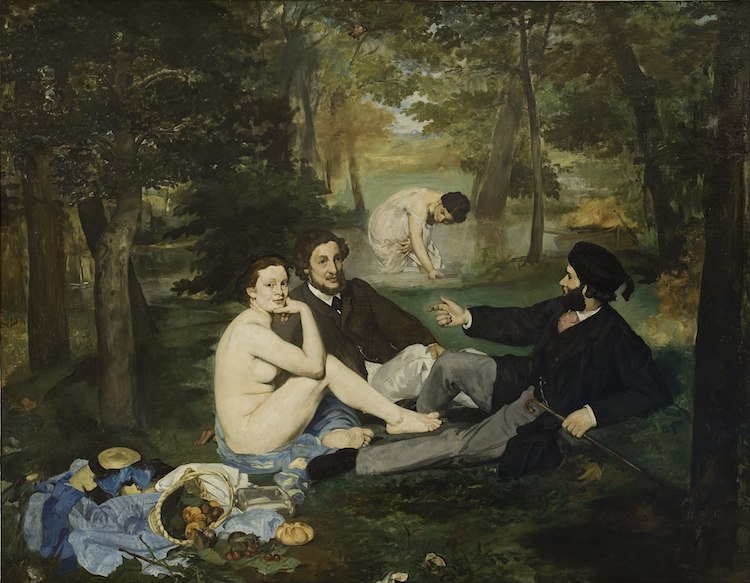
Édouard Manet, “Le Déjeuner sur l'herbe,” 1863 (Photo: Musée d'Orsay via Wikimedia Commons, Public domain)
Title | Le Déjeuner sur l'herbe |
Artist | Édouard Manet |
Year | 1863 |
Medium | Oil on canvas |
Size | 81.9 in x 104.1 in (208 cm x 264.5 cm) |
Location | Musée d'Orsay (Paris, France) |
Pierre-Auguste Renoir, Bal du moulin de la Galette, 1876
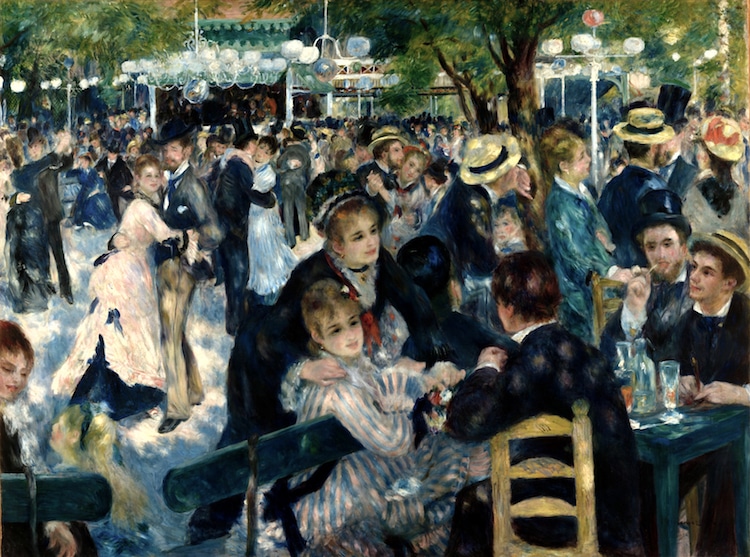
Pierre-Auguste Renoir, “Bal du moulin de la Galette,” 1876 (Photo: Musée d'Orsay via Wikimedia Commons, Public domain)
Title | Bal du moulin de la Galette |
Artist | Pierre-Auguste Renoir |
Year | 1876 |
Medium | Oil on canvas |
Size | 52 in x 69 in (131 cm x 175 cm) |
Location | Musée d'Orsay (Paris, France) |
Georges Seurat, A Sunday Afternoon on the Island of La Grande Jatte, 1884–6
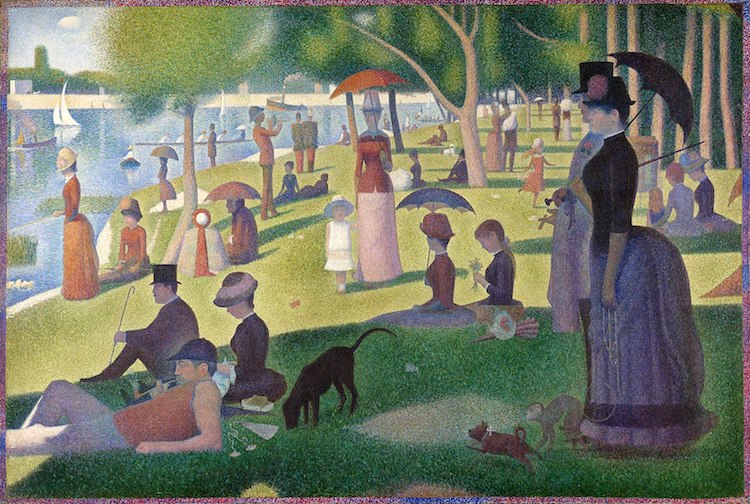
Georges Seurat, “A Sunday Afternoon on the Island of La Grande Jatte,” 1884–6 (Photo: Art Institute of Chicago via Wikimedia Commons, Public domain)
Title | A Sunday Afternoon on the Island of La Grande Jatte |
Artist | Georges Seurat |
Year | 1884–1886 |
Medium | Oil on canvas |
Size | 81.7 in x 121.25 in (207.6 cm x 308 cm) |
Location | Art Institute of Chicago (Chicago, USA) |
Vincent van Gogh, The Starry Night, 1889
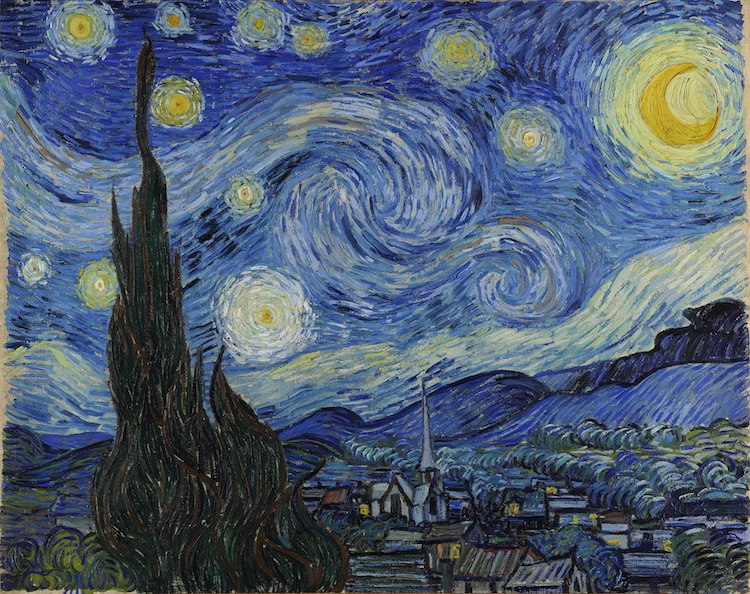
Vincent van Gogh, “The Starry Night,” 1889 (Photo: MoMA via Wikimedia Commons, Public domain)
Title | The Starry Night |
Artist | Vincent van Gogh |
Year | 1889 |
Medium | Oil on canvas |
Size | 29.01 in x 36.26 in (73.7 cm x 92.1 cm) |
Location | Museum of Modern Art (New York, USA) |
Edvard Munch, The Scream, 1893
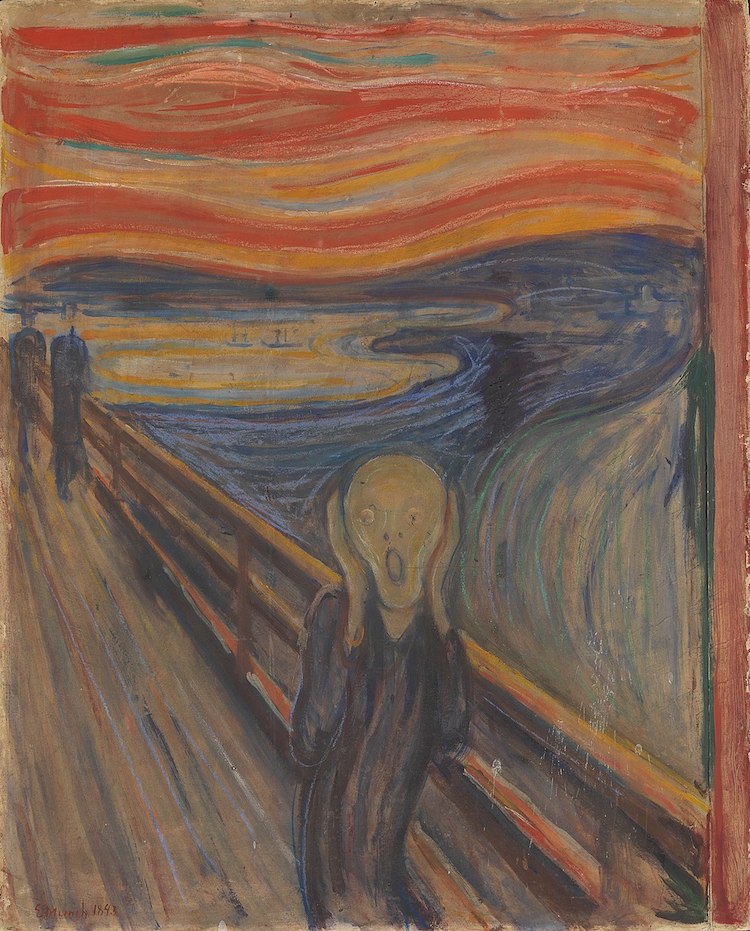
Edvard Munch, “The Scream,” 1893 (Photo: National Gallery of Norway via Wikimedia Commons, Public domain)
Title | The Scream |
Artist | Edvard Munch |
Year | 1893 |
Medium | Oil, tempera, pastel, and crayon on cardboard |
Size | 96 in x 92 in (243.9 cm x 233.7 cm) |
Location | National Gallery and Munch Museum (Oslo, Norway) |
Gustav Klimt, The Kiss, 1907–8
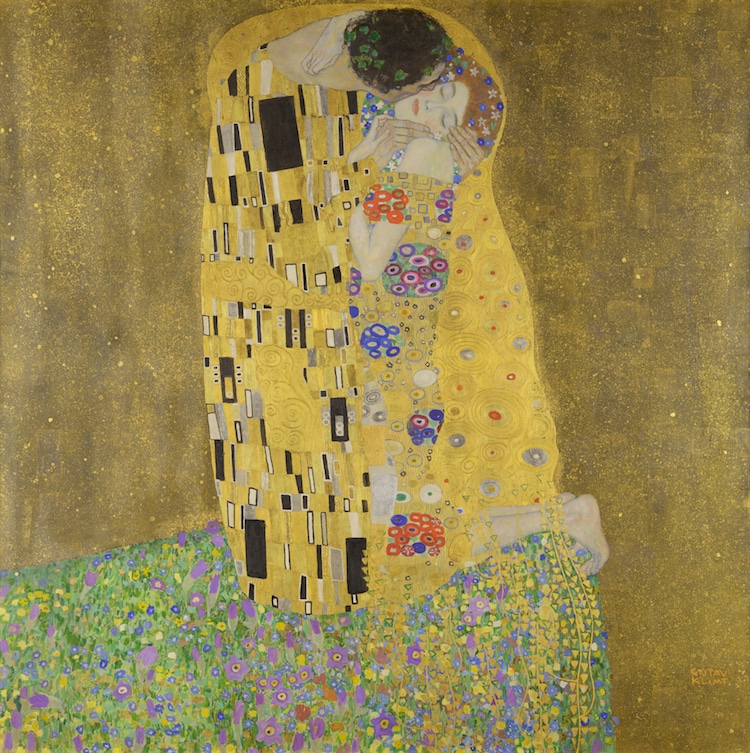
Gustav Klimt, “The Kiss,” oil and gold leaf on canvas, 1907–1908 (Photo: Belvedere via Wikimedia Commons, Public domain)
Title | The Kiss |
Artist | Gustav Klimt |
Year | 1907-1908 |
Medium | Oil and gold leaf on canvas |
Size | 71 in × 71 in (180 cm × 180 cm) |
Location | Galerie Belvedere (Vienna, Austria) |
Pablo Picasso, Les Demoiselles d'Avignon, 1907

Pablo Picasso, “Les Demoiselles d'Avignon,” 1907 (Photo: MoMA via Wikimedia Commons, Fair use)
Title | Les Demoiselles d'Avignon |
Artist | Pablo Picasso |
Year | 1907 |
Medium | Oil on canvas |
Size | 96 in x 92 in (243.9 cm x 233.7 cm) |
Location | Museum of Modern Art (New York, USA) |
Salvador Dalí, The Persistence of Memory, 1931
Title | The Persistence of Memory |
Artist | Salvador Dalí |
Year | 1931 |
Medium | Oil on canvas |
Size | 9.5 in x 13 in (24 cm x 33 cm) |
Location | Museum of Modern Art (New York, USA) |
Grant Wood, American Gothic, 1930
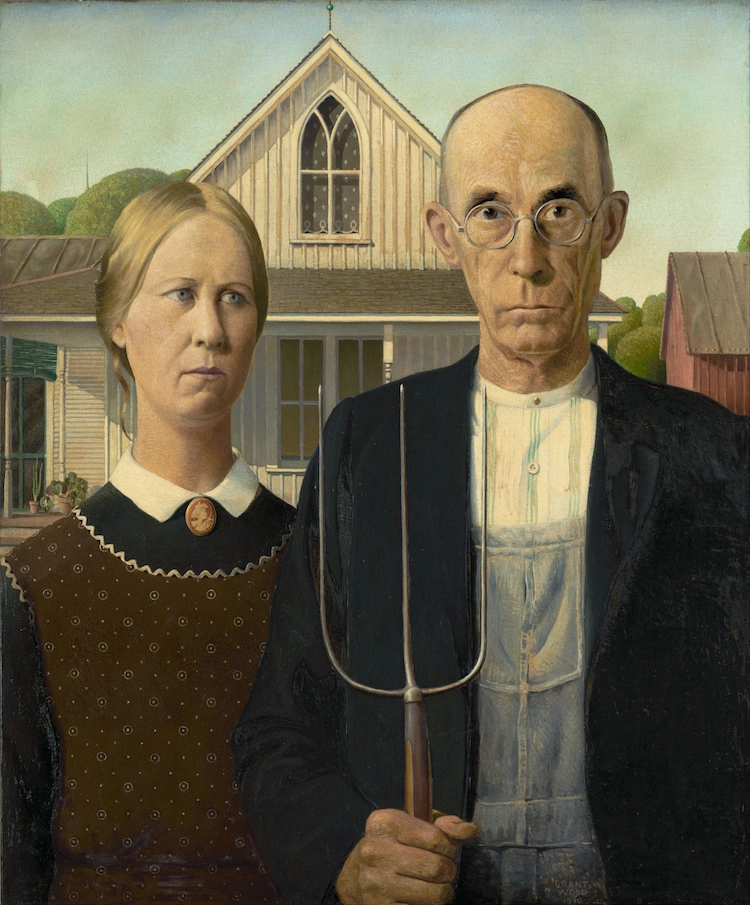
Grant Wood, “American Gothic,” 1930 (Photo: Art Institute of Chicago via Wikimedia Commons, Public domain)
Title | American Gothic |
Artist | Grant Wood |
Year | 1930 |
Medium | Oil on canvas |
Size | 33 3/4 in x 25 3/4 in (78 cm x 65.3 cm) |
Location | Art Institute of Chicago (Chicago, USA) |
Edward Hopper, Nighthawks, 1942
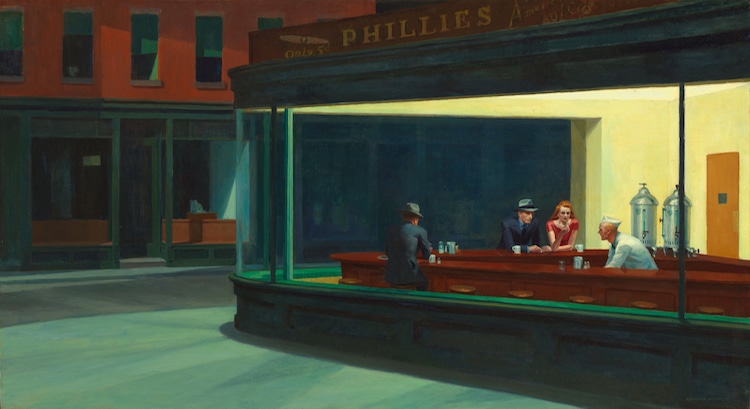
Edward Hopper, “Nighthawks,” 1942 (Photo: Art Institute of Chicago via Wikipedia, Public domain)
Title | Nighthawks |
Artist | Edward Hopper |
Year | 1942 |
Medium | Oil on canvas |
Size | 33.1 in x 60 in (84.1 cm x 152.4 cm) |
Location | Art Institute of Chicago (Chicago, USA) |
Check out our full list of famous paintings.
Books About Fine Art
Frequently Asked Questions
What is fine art?
Fine art traditionally refers to types of art that primarily serve an aesthetic or intellectual purpose. This usually applies to visual arts, such as painting and sculpture, but has also been used to describe other creative disciplines including music, architecture, poetry, and performing arts. In this case, the use of the word “fine” refers to the integrity of the artistic pursuit.
The definition of fine art excludes arts that serve functional purposes, most notably crafts and applied arts.
What arts are considered fine arts?
Today, fine arts is usually applied to visual arts like painting, drawing, sculpture, printmaking, installation, and fine art photography.
Related Articles:
13 of Art History’s Most Horrifying Masterpieces
Why Rembrandt Is Considered One of Art History’s Most Important Old Masters
30 Famous Paintings From Western Art History Any Art Lover Should Know
Set Sail on a Journey Through 9 of Art History’s Most Important Seascape Paintings















































































